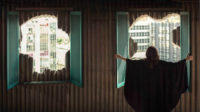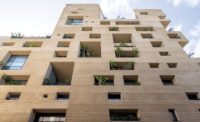Along with the customary attention that accompanies a centenary, several events have converged to make a revisit of Bo Bardi's legacy timely and significant. The Brazilian economic boom in the first decade of this century has attracted international starchitects to Rio de Janeiro and São Paulo for the first time since Le Corbusier traveled to Rio to work on the Ministry of Education and Health building in 1936. This, coupled with Brazil's preparations for the World Cup to be played in 12 cities next month and the Olympic Games in 2016, has precipitated urban redevelopment and infrastructure investment and focused international interest on the rich legacy of Brazilian Modernism (and the country's emerging generation of architects) to a degree not seen since the inauguration of Brasília in 1960. Finally, the death of Oscar Niemeyer at the age of 104 in 2012 has permitted other strands of Brazilian architecture to emerge from his long shadow, which dominated the country's design culture for almost three generations.
Born Achillina Bo in Rome in 1914, the architect's formative years were spent near the nerve center of the political crosscurrents of Fascist Italy. Her education at the University of Rome combined a steeping in the city's ancient monuments with the rationalist principles that were taking hold in 1930s Italy. Drawn to Milan's more progressive and cosmopolitan architectural circles, Bo Bardi moved north in 1940 and spent the war years as an editor and graphic designer, working with Gio Ponti, among others. It was in Milan that she met Pietro Maria Bardi, an art dealer and journalist 14 years her senior. Soon, however, Bardi, confronted with the reality of Italy's postwar devastation and seeking to escape association with his Fascist alliances before the war, looked to South America as a new place to develop his artistic and curatorial activities. A 1943 exhibition at New York's Museum of Modern Art, Brazil Builds, had highlighted developments in Brazilian Modernism and brought the country to the Bardis' attention. The possibility of curating three art shows in Rio de Janeiro in 1946—including one in the recently completed Ministry of Education and Health building—was enough to entice the two Italians to plan an extended stay in Brazil. They married before departing.
Bo Bardi later wrote that arriving in Brazil, she had reached “an unimaginable country where everything was possible. I felt happy, and Brazil had no ruins.” That did not mean that the place was devoid of its own political undertow. The government was already unofficially promoting the work of Lúcio Costa and Oscar Niemeyer as the architectural language of choice for the rapidly developing nation. Though it took her some years to fully appreciate the implications of this architectural hegemony, Bo Bardi's subtle Modernism with hints of regional vernacular (developed to its full expression in later decades during her multiple sojourns in the city of Salvador) could not compete with the self-confident form-making of Niemeyer and his colleagues. This helps explain why her work has been so little appreciated outside of Brazil until recently.
Amongst Bo Bardi's 20 completed works, three São Paulo projects—separated by almost a decade from each other—stand out: the Casa de Vidro (1949–52), MASP (Museu de Arte de São Paulo, 1957–68), and the SESC Pompeia Leisure Center (1977–86). Designed for herself and her husband, Casa de Vidro was Bo Bardi's first built work, yet it revealed the seeds of her later hybrid design philosophy. Perched on 10 slender columns, a glazed volume contains the public part of the house and encloses a courtyard with a tree in its middle. Behind, a long masonry wing with timber shutters houses the bedroom and service areas and echoes the materials of Brazil's rural architecture. Subsequent stays in Salvador reinforced Bo Bardi's passion for Brazilian popular art and architecture, with their traditional materials, rough finishes, and embrace of nature.
The architect's commission for MASP came through her husband's dealings in the São Paulo art world. Today, 50 years after its construction, the startling Brutalist building, whose suspended galleries span 245 feet over a public plaza on the city's busy Avenida Paulista, remains one of the city's few real civic spaces.
But the defining project of Bo Bardi's career was the SESC Pompeia Leisure Center where, with the support of an enlightened public-sector client, she was able to synthesize her humanitarian approach to design in a community facility at a neighborhood scale. The project involved the transformation of some 19 industrial sheds from an abandoned 1930s steel-barrel factory into a community center. For this, the architect designed two new concrete towers, which house sports facilities and form an urban landmark at the site's northeast perimeter. At SESC Pompeia, she challenged the austerity of the prevailing Brazilian Brutalism, softening it with lyrical window forms and handcrafted materials. Some of Bo Bardi's dedicated former associates who worked with her on SESC Pompeia continue to thrive in Brazil today, most notably Brasil Arquitetura and André Vainer Arquitetos.
For the reader who would like to dig further, Zeuler R. M. de A. Lima's Lina Bo Bardi (Yale University Press, 2013) is an excellent reference. The culmination of 10 years of research, Lima's readable biography cum monograph skillfully elucidates Bo Bardi's life and career starting with her early years in Rome. Both the era of Brazilian optimism that formed the backdrop to MASP and the dark turmoil of the military dictatorship that lasted until 1985, during which Bo Bardi realized the dramatic and emblematic SESC Pompeia complex, are explored in depth. In addition, Catherine Veikos's Lina Bo Bardi: The Theory of Architectural Practice (Routledge, 2013) contains the first English translation of a 1957 seminal text by Bo Bardi.
The principles that drove Lina Bo Bardi's passions remain just as pertinent today as they were at the peak of her career over three decades ago: an architecture that favors humanism over iconic form, a desire to breathe new life into historic buildings, a fascination with local materials and craft, and a profound commitment to the belief in the architect as an agent of social change. Noemi Blager, curator of the exhibition Lina Bo Bardi: Together (due to tour the U.S. in 2015), cites the architect's attitude as her greatest legacy. She was ahead of her time, promoting cultural sustainability in the broadest sense. In the face of increasingly globalized architectural idioms, Bo Bardi's lifelong quest for an intrinsically Brazilian architecture remains ever more critical as the country's cities rush to transform themselves for their turn on the world stage.
Hattie Hartman is an editor at The Architects’ Journal, London.














Post a comment to this article
Report Abusive Comment